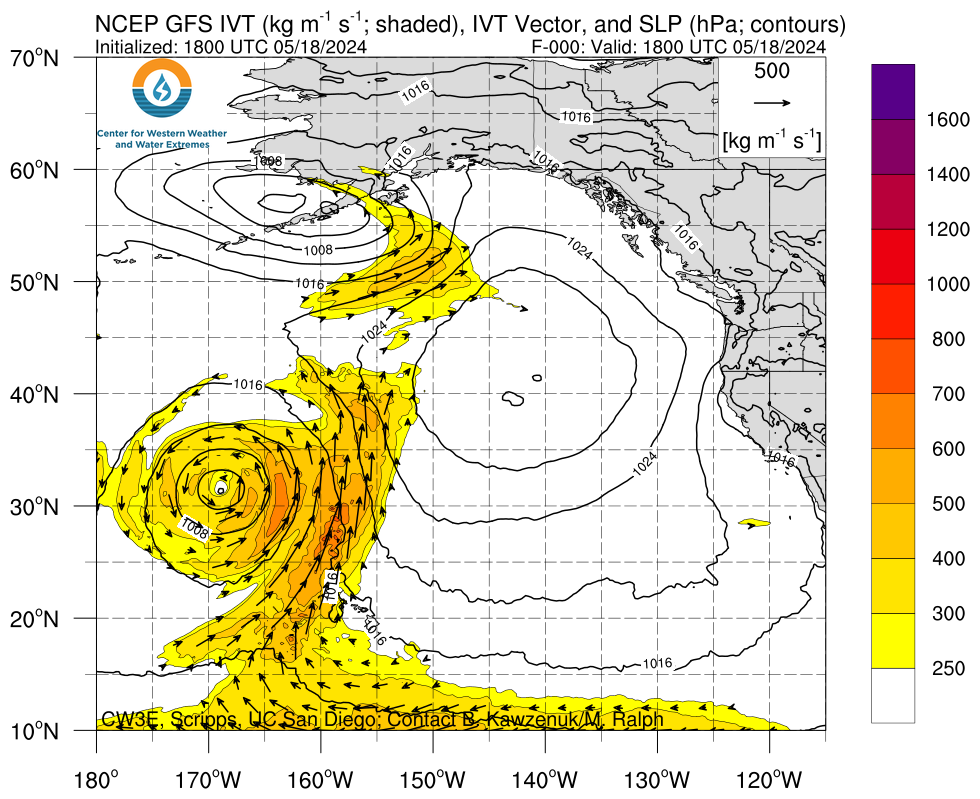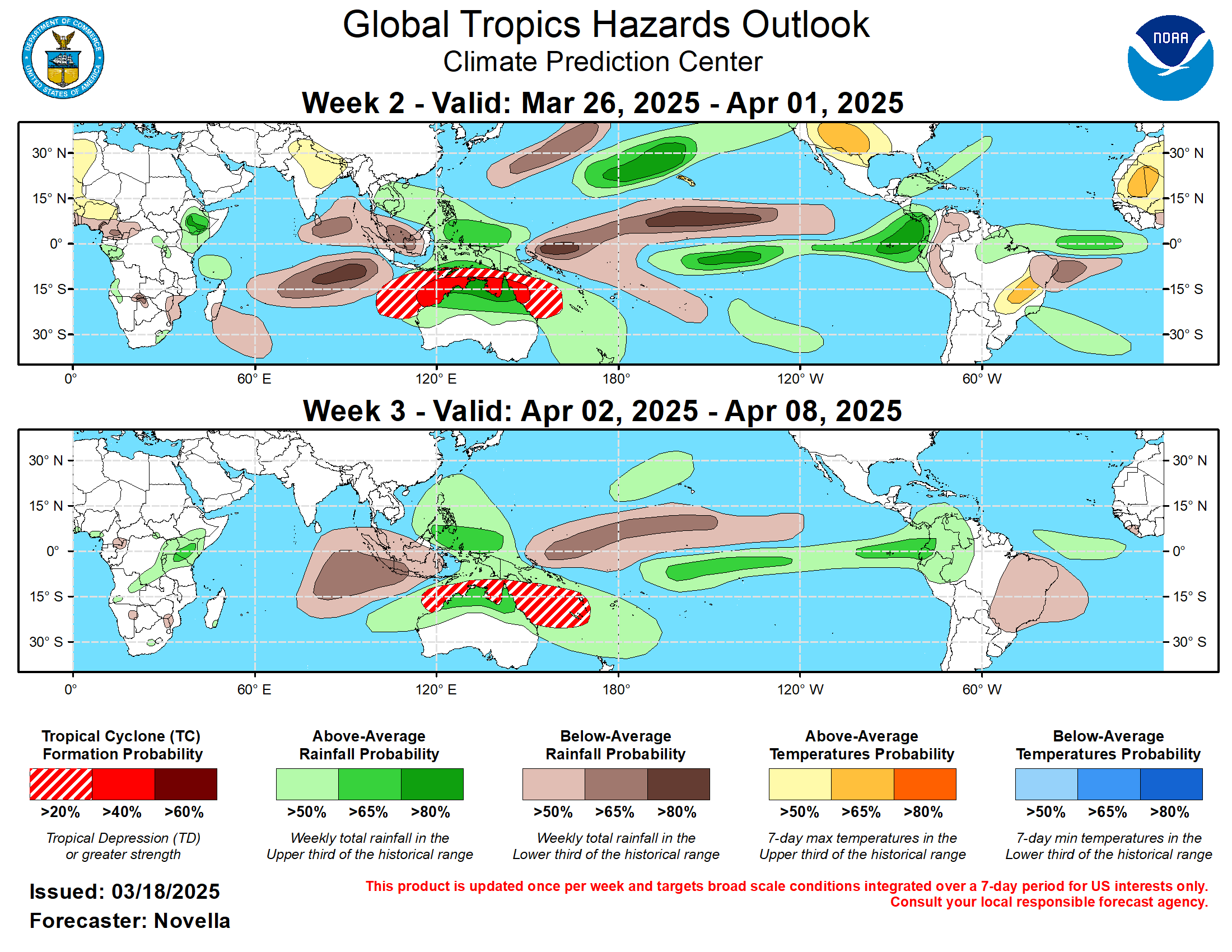This article focuses on what we are paying attention to in the next 48 to 72 hours. The article also includes weather maps for longer-term U.S. outlooks and a six-day World weather outlook which can be very useful for travelers.
First the NWS Short Range Forecast. The afternoon NWS text update can be found here after about 4 p.m. New York time but it is unlikely to have changed very much from the morning update. The images in this article automatically update.
Short Range Forecast Discussion
NWS Weather Prediction Center College Park MD
Thu Jul 04 2024
Valid 12Z Thu Jul 04 2024 – 12Z Sat Jul 06 2024…Extremely dangerous and record-breaking heatwave to impact much of the
West through this weekend……One more day of oppressive heat and humidity across the Southern Plains
and Lower Mississippi Valley today before steamy temperatures focus over
the Mid-Atlantic and Southeast……Flash flooding and severe thunderstorms possible throughout parts of
the Midwest, Ohio Valley, and Southern Plains this Independence Day…A significant and extremely dangerous heatwave is set to build throughout
the West to end this week and into the extended holiday weekend, with
several days of record-breaking heat forecast. An upper-level high
situated just off the West Coast today is forecast to strengthen and
reorient directly over the western U.S. by Friday. This pattern will
support well above average temperatures over California and into southwest
Oregon today before heat spreads further throughout the western U.S. this
weekend. High temperatures are forecast to reach into the 105-115F range
for interior California away from the immediate coastline, as well as
across much of the Desert Southwest. Locally higher temperatures into the
120s are possible in the typical hot spots of the Desert Southwest.
Searing afternoon temperatures will also spread into the Northwest and
parts of the central Great Basin, with widespread highs rising into the
90s and low 100s. Dozens of daily record high temperatures are possible,
expressing the rarity of this early-July heatwave. The duration of this
heat is also concerning as scorching above average temperatures are
forecast to linger into next week. Heat impacts can compound over time,
therefore it is important to remain weather aware and follow the advice of
local officials. This level of heat throughout parts of the Mojave Desert
and Sacramento/San Joaquin valleys of California could pose a risk to
anyone if proper heat safety is not followed. It is imperative to stay
hydrated, out of direct sunlight, and in buildings with sufficient
air-conditioning when possible. It is also equally as important to check
on the safety of vulnerable friends, family, and neighbors.Oppressive heat and humidity will also be found throughout the southern
Plains and lower Mississippi Valley today, while expanding eastward to the
Mid-Atlantic and Southeast for the end of the week. High temperatures
rising into the upper 90s and low 100s are expected, with heat indices
soaring into the 110s across the lower Mississippi Valley. Warm overnight
conditions in the upper 70s and low 80s will offer little relief, leading
to a dangerous situation for those without access to adequate cooling. A
cold front entering the southern Plains is anticipated to offer cooler and
below average temperatures to Oklahoma, much of northern/western Texas,
and the Mid-South by Friday. Above average temperatures are then
anticipated to confine to the Southeast and Mid-Atlantic for the start of
the weekend, with afternoon highs into the mid-to-upper 90s. If planning
to spend an extended amount of time outdoors this Fourth of July, be sure
to use caution and act quickly if you see signs of heat-related illnesses.An active and stormy weather pattern over the central U.S. is expected to
create chances for severe thunderstorms and heavy rainfall, which could
impact holiday gatherings through early this weekend. A developing area of
low pressure over the northern Plains is forecast to progress into the
upper Midwest by tonight and team up with a lingering frontal boundary
stretching from the lower Great Lakes to the southern Plains to trigger
some meteorological fireworks. Thunderstorm chances span from the southern
Plains/Rockies to the middle/upper Mississippi Valley and also eastward to
the Ohio Valley and Mid-Atlantic. However, the greatest threat for strong
to severe thunderstorms will be near/along the frontal boundary through
parts of the middle/upper Mississippi Valley and southern Plains. Damaging
wind gusts and frequent lightning are the most likely weather hazard
associated with these Fourth of July storms. Flash flooding will remain a
concern throughout the upper Midwest as well due to yet another round of
thunderstorms overlapping areas dealing with ongoing river flooding and
saturated soils, with scattered flash flooding also possible between the
Ohio Valley and southern Plains. On Friday, thunderstorms will continue to
progress eastward with the frontal boundary into much of the eastern third
of the country. Isolated strong to severe storms and flash flooding are
possible. The greatest threat for damaging wind gusts associated with
these storms will be across the upper Ohio Valley. Elsewhere, daily
thunderstorm chances associated with daytime heating are possible along
the Gulf Coast and Florida. Scattered showers and thunderstorms are also
possible throughout the north-central U.S. this weekend as upper troughing
remains over the region. Residents and visitors located within areas
expecting severe weather and/or heavy rainfall are advised to remain
weather aware, have multiple ways to receive warnings, and never drive
across flooded roadways.Have a safe Independence Day!
To get your local forecast plus active alerts and warnings click HERE and enter your city, state or zip code.
Learn about wave patterns HERE.
Then, looking at the world and of course, the U.S. shows here also. Today we are looking at precipitation.
Please click on “Read More” below to access the full Daily Report issued today.
| Notices: What would you like to learn about? Please provide that to me via the comment section at the end of the article. |
Now more detail on the 48-Hour Forecast (It is a 48 to 72 Hour Forecast actually)
Daily weather maps. The Day 1 map updates twice a day and the Day 2 and 3 maps update only once a day. These maps update automatically. But if that does not happen, you can get updates by clicking HERE
TODAY (or late in the day the evening/overnight map will appear) (Key to surface fronts shown on maps and you will then also be able to insert a city name or zip code and get a local NWS forecast).
TOMORROW
NEXT DAY
We have a new animation of the forecast which shows how things may play out over the next 60 hours. To update click ANIMATION. Doing so will get you to the dashboard. You can then step through the animation or hit LOOP on the upper right of the display. You will have to hit the back arrow ← at the top left on your computer to get back into this article. It is a little more trouble than before but I think NOAA scrapped the animation routine I was using so we have to keep up with “progress”.
The NWS Climate Prediction Center’s: Watches, Warnings, and Advisories plus other information can be found HERE. That takes you to the NWC Severe Weather Site. From there you can select among many categories of information. Remember to hit the back arrow ← at the top left of your screen to return to this article.
ATMOSPHERIC RIVERS
This tells us what is approaching the West Coast. Click HERE to update If I have not gotten around to doing the update. Here is some useful information about Atmospheric Rivers.
Below is the current five-day cumulative forecast of precipitation (Updates can be found HERE)
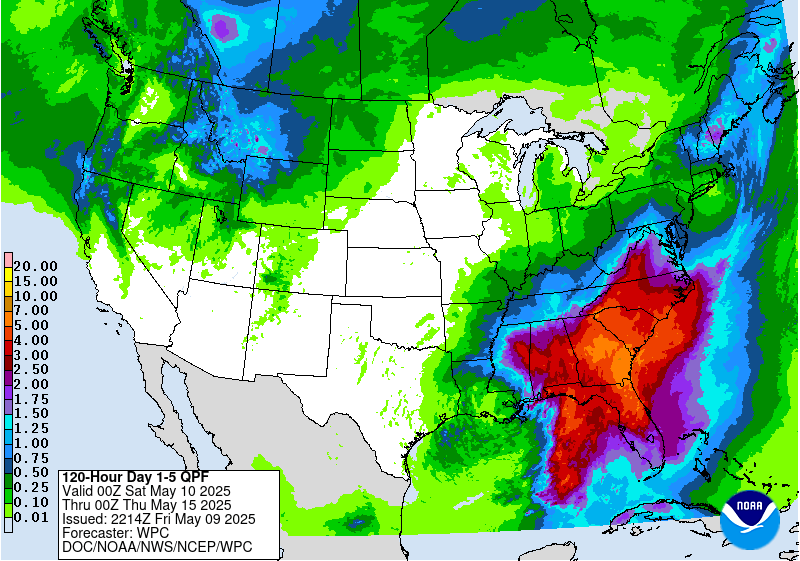
Ski SnowReports will Resume in the Fall.
Now we look at Intermediate-Term “Outlook” maps for three time periods. Days 6 – 10, Days 8 – 14, and Weeks 3 and 4. An outlook differs from a forecast based on how NOAA uses these terms in that an “outlook” presents information as deviation from normal and the likelihood of these deviations.
Below are the links to obtain updates and additional information. They are particularly useful if you happen to be reading this article significantly later than when it was published. I always try to provide readers with the source of the information in my articles. These links may also be useful for those viewing this article on a cell phone or other small screen.
| Days 6 – 10 (shown in Row 1) | Days 8 – 14 (Shown in Row 2) | Weeks 3 and 4 (Shown in Row 3 but updates only on Fridays) |
| https://www.cpc.ncep.noaa. gov/products/predictions/610day/ | https://www.cpc.ncep .noaa.gov/products/predictions/814day/ | https://www.cpc.ncep.noaa.gov/products/predictions/WK34/ |
Showing the actual maps. They should now update automatically. The Week 3 – 4 Outlook only updates on Fridays. So below is what I call the Intermediate-term outlook. On Fridays, it extends out 28 Days. That declines day by day so on Thursday it only looks out 22 days until the next day when the Week 3 – 4 Outlook is updated and this extends the outlook by one additional week.
| 6–
10
|
|
|
| 8–
14 |
|
|
| 3–
4 |
|
|
HAZARDS OUTLOOKS
Daily Agricultural Weather Highlights can be found HERE
Month to Date Information
Temperature month to date can be found at https://hprcc.unl.edu/products/maps/acis/MonthTDeptUS.png
Precipitation month to date can be found at https://hprcc.unl.edu/products/maps/acis /MonthPNormUS.png
World Forecast [that website is has been intermittent so be patient]
Below are the Day 1 -3 and 4-6 forecasts for temperature and precipitation. Updates and much additional information can be obtained HERE
World Temperature Anomalies

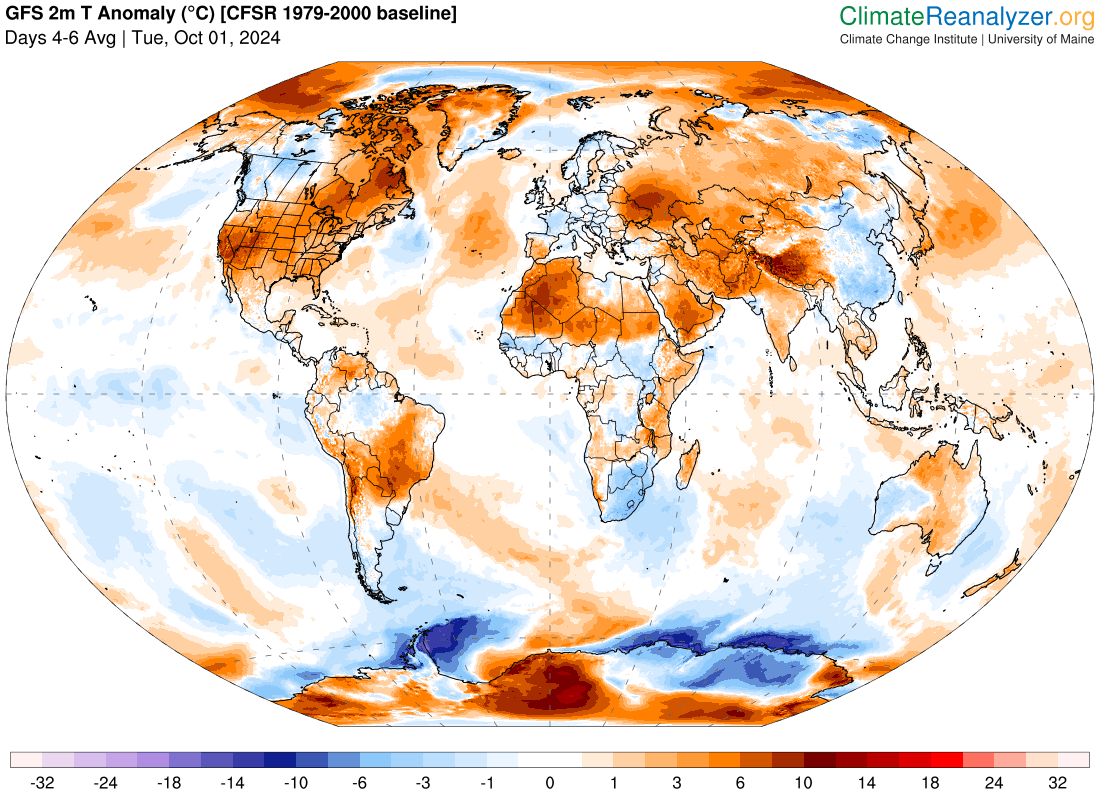
World Accumulated Precipitation
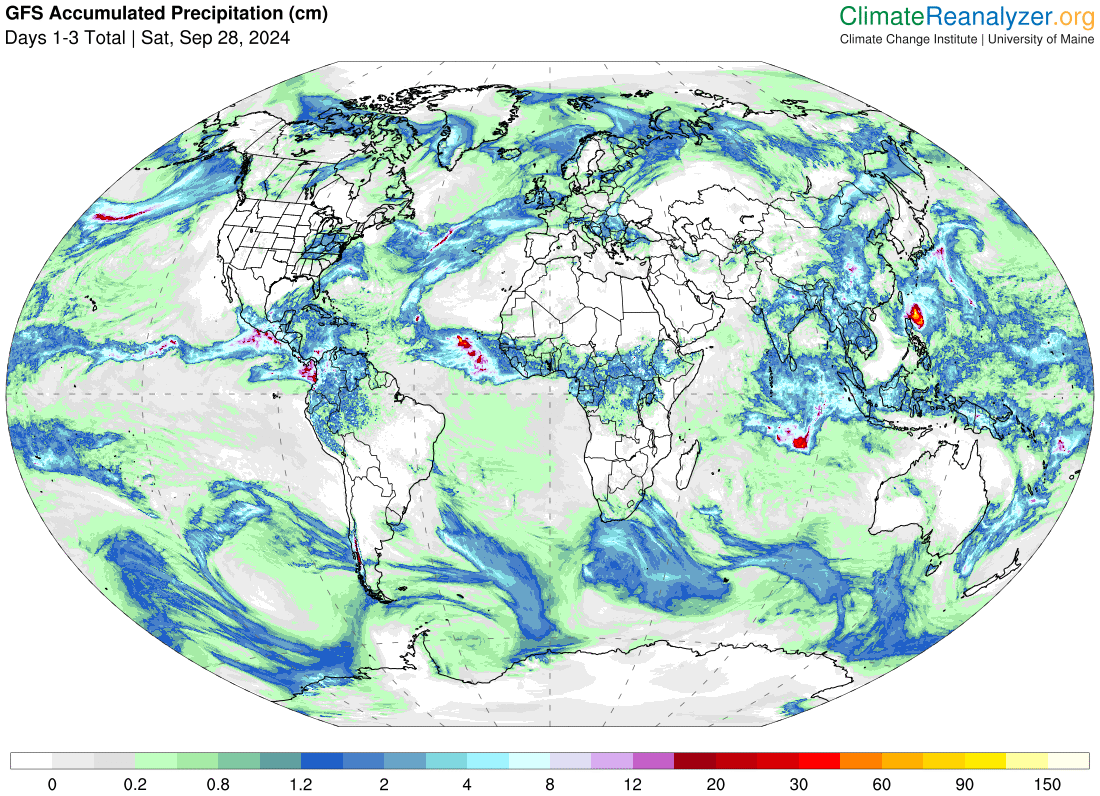

This information is provided by the University of Maine. They draw upon many different sources. There is a lot of information available at the link provided. I have just provided two useful forecasts. There are probably over a hundred different forecasts available from this source.
Worldwide Tropical Forecast (This is a NOAA Product)
This graphic updates on Tuesdays) If it has not been updated, you can get the update by clicking here Readers will only have to do that if they are reading this article much later than the date of it being published.
Information on Tropical Storms can be found HERE. Western Pacific information can be found HERE. Note that unless there is an out-of-season storm the below images will not update until the National Hurricane Center starts their seasonal update of these maps on June 1. I include them simply because there can be an out-of-season event in which case it should show up in these maps.


–
| I hope you found this article interesting and useful. |


